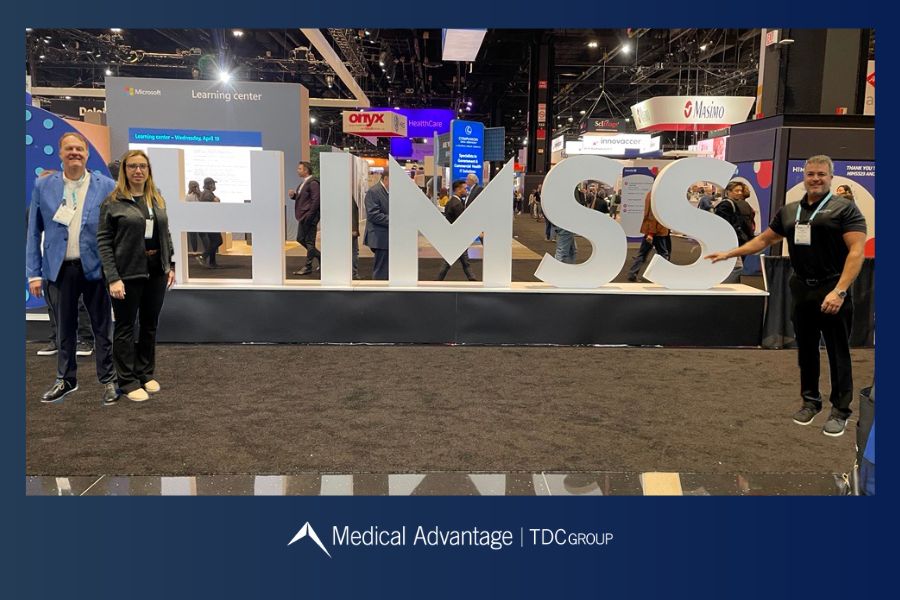Today, nearly every medical practice is dependent on technology. However, this ever-changing technology is not always easy to keep up with. Technical assistance provides the necessary support for medical practices to keep up with the rapidly evolving world of technology and is critical in managing the technological aspects of a medical practice. However, most medical practices and healthcare organizations may not have the necessary dedicated in-house IT support and need to seek outside help.
What is Technical Assistance in Medical Practices?
Technical assistance is critical for the proper functioning of medical practices. It ensures that the latest technologies are leveraged to provide efficient and effective services. Technical assistance also helps practices keep up with the ever-evolving healthcare industry and regulations to make sure they remain compliant. By engaging technical assistance, medical practices can improve their productivity, reduce overhead costs, and enhance patient satisfaction.
In medical practices, technical assistance includes support in implementing, maintaining, and upgrading software, hardware, and networking systems. Technicians can assist with troubleshooting any technical errors, fixing them quickly, and training the medical staff to utilize the technology effectively. When outsourced, technical assistance can ensure that all the medical practice’s technical needs, including cybersecurity, are taken care of by experts in the field.
Technical Assistance and Value-Based Care
As the healthcare industry continues to shift towards a value-based care model that focuses on improving patient outcomes and experiences, medical professionals are facing new challenges in delivering quality care. The success of value-based care models, which prioritize preventive care and population health management, relies heavily on the effective use of technology and data analytics to improve patient health. However, for many healthcare organizations, implementing these new systems can be challenging without the right technical assistance.
Understanding Value-Based Care
Value-based care represents a significant shift from traditional fee-for-service models that prioritize volume over quality. Under this model, healthcare providers are incentivized to focus on preventing illness, managing chronic conditions, and improving overall patient outcomes. To achieve these goals, healthcare organizations must adopt advanced analytics and technology such as electronic health records (EHRs), clinical decision support tools, patient portals, and telehealth solutions. To effectively utilize these tools, technical assistance is essential.
The Benefits of Technical Assistance
Technical assistance in value-based care can come in various forms, from IT support and system integration to project management, training, and consulting. Skilled technical consultants can help healthcare organizations better understand the technologies necessary to achieve their goals and implement and manage these systems quickly and efficiently. They can also provide valuable training and support to ensure that medical professionals are utilizing these technologies to their fullest potential, improving overall patient care, and driving better outcomes.
Leveraging Technical Assistance to Improve Patient Outcomes
By leveraging technical assistance, healthcare organizations can improve their ability to provide high-quality care and reduce costs. For example, patient portals and telehealth technologies can improve patient access to care, allowing healthcare providers to monitor symptoms, manage chronic conditions, and provide timely intervention when needed. EHRs and analytics tools can help healthcare organizations identify at-risk patient populations, track outcomes, and develop care plans that improve patient health. With the right technical assistance, healthcare organizations can achieve these goals more efficiently and effectively.
Technical Assistance and the Future of Value-Based Care
As the healthcare industry continues to focus on value-based care, the demand for technical assistance will continue to grow. Healthcare organizations must prioritize the development and implementation of advanced analytics and technology systems. Having a team of skilled technical professionals who specialize in implementing these systems will be essential to driving better patient outcomes and reducing costs. Additionally, technical assistance will become increasingly important as value-based care models continue to evolve, and new technologies emerge to support this shift.
Choosing a Technical Assistance Vendor for Value Based Care in Your Practice
Healthcare providers are working to improve their VBC performance to cater to their patients in the best possible way. Technical assistance vendors are essential in this process as they provide the necessary tools, data analytics, and expertise to help practices with the transition towards VBC. Consider the following when vetting technical assistance vendors.
Ask about their experience and expertise in VBC: The vendor you choose should have extensive experience and expertise in VBC. The vendor should understand the reimbursement model’s complexities and be able to work with you to improve your VBC performance. Look for vendors that follow a patient-centered approach and can provide customized assistance to improve your practice’s quality of care.
Look for a comprehensive list of services: A technical assistance vendor should be able to provide a comprehensive list of services, including data analytics, care coordination, and population health management. The vendor should have experience working with practices of all sizes and should cater to your specific needs. Look for vendors that can provide tailored solutions to your practice’s needs.
Check the vendor’s track record and reputation: Do your research and thoroughly vet the vendor’s track record and reputation before making a decision. Speak with other healthcare providers who have worked with the vendor in the past and look for reviews and testimonials online. A vendor with a good reputation will have a higher chance of success in providing quality technical assistance to your practice.
Assess communication and collaboration skills: A technical assistance vendor should be able to communicate and collaborate effectively with your practice. Look for vendors who are willing to work with your practice to improve your VBC performance. Pay attention to their communication style and assess if they can integrate with your existing team.
Technical Assistance Agreements
A Technical Assistance Agreement (TAA) is a contract between two or more parties that outlines the terms of a technical assistance exchange. In medical practices, TAAs document the exchange of technical assistance services, training, and access to certain data and information. The primary purpose of a TAA is to establish a collaborative responsibility between two entities, setting boundaries and obligations for each. TAAs are legally binding contracts, and therefore, they must contain essential elements such as:
- Description of the project
- Parties involved
- The scope of technical assistance
- Timeline and timeframe
- Confidentiality agreement
- Termination clause
- Liability and accountability
Implementing Technical Assistance in Your Practice
In this digital age, technical assistance plays a vital role in healthcare organizations. It is essential to keep up with the ongoing changes and improvements to ensure patient satisfaction and enhance the overall quality of services. The following steps provide guidance for implementing technical assistance.
- Identify Your Practice Needs
The first step in implementing technical assistance in your practice is to identify the areas that require improvement in your workflow. Look for ways to enhance the patient experience, reduce wait times, streamline scheduling, and simplify billing. Once you have identified the areas that need improvement, you can research and select the appropriate technology to address your concerns.
2. Select the Right Technology
When selecting technology, choose a solution that aligns with your practice’s needs and objectives. Consider the features, cost, and ease-of-use of the software or hardware you are considering. You can also seek out recommendations from colleagues, look at industry research, and review online testimonials and reviews. By selecting the right technology, you will enhance your practice’s functionality and may even save you time and money in the long run.
3. Train Your Staff
After selecting the appropriate technology, the next step is to facilitate training for your staff. Ensure that your employees are familiar with the features and functionalities of the software/hardware. They should also be able to troubleshoot and handle any technical issues that may arise on the device. This will ultimately lead to fewer distractions and improve patient satisfaction.
4. Have a Strong Technical Support Team
Even with the most reliable technology, issues or technical problems might occur. That is why it is important to ensure your vendor’s customer support team is available in case of any issues or dissatisfaction with the software/hardware. This team should have expertise in the technology/program in question and be able to provide technical assistance when needed.
5. Ensure Security and Compliance
In addition to selecting the right technology and procedures that streamline workflow, it is imperative to have security protocols in place. This includes securing patient records, software, and hardware. Additionally, it is essential to ensure that any technology meets compliance standards (such as HIPAA, etc.). These tasks may require a dedicated IT professional to handle your organization’s security and compliance.
Conclusion: Technical Assistance for Your Medical Practice
Implementing advanced technological tools for medical practice can enhance patient satisfaction, improve workflow, and increase productivity. Utilizing technical assistance in your practice can help ensure these implementations are successful. By identifying the needs of your practice, selecting the right technology, training your staff, creating a technical support team, and ensuring security and compliance, you can make your practice more efficient and trustworthy.
A Trusted Partner for Your Team
Medical Advantage uses an individualized approach to set your practice up for success and ensure its ongoing success through continued monitoring, updating, and education. We stay on top of changes to software and hardware, keeping pace with the ever-evolving field so that you can focus on patient care. Let us take the technological burden off your shoulders and give you and your staff the tools you need to provide the best, most efficient, and most effective care possible. Contact us today for more information.





